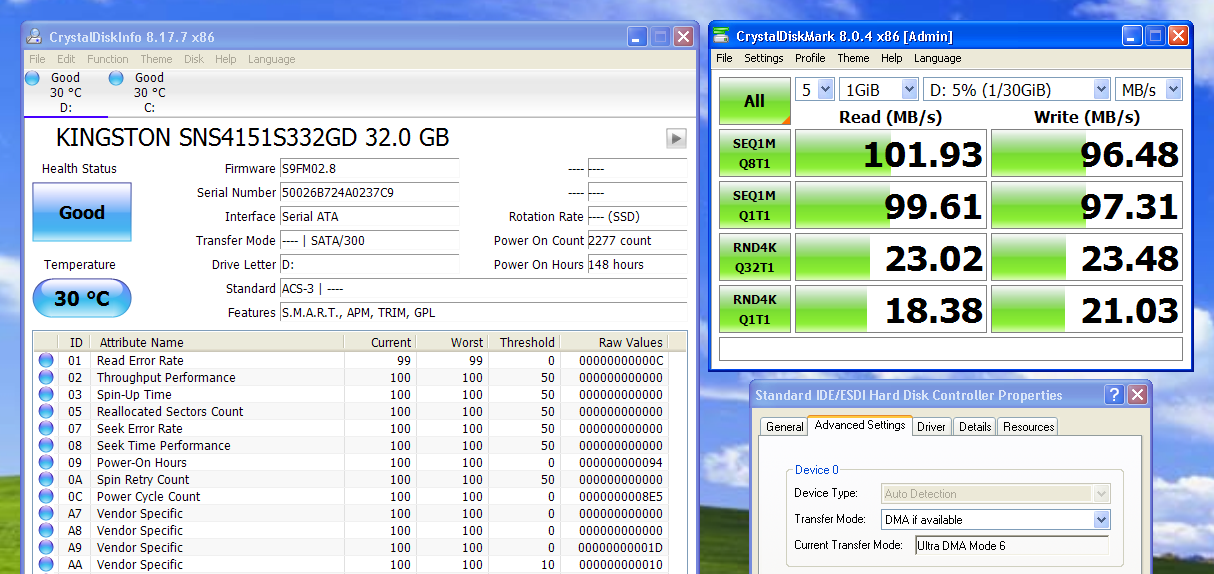After assembling revision 1.0 of my adapter, I tested it in a Wyse V10L thin client. Surprisingly, it worked perfectly on the first attempt. With a bit of tinkering on the host and drive settings, this was the performance I got:

The Kingston SSD was a $12 ebay purchase, probably salvaged from a Chromebook. Because the drive speaks SATA to the JM20330, it shows up as a SATA device in most disk info utilities, even though the OS sees it as an IDE drive.
For comparison, this is how the same SSD benchmarks in AHCI mode on a SATA III port in a modern system:

The adapter is clearly much slower in some metrics, but interestingly, it performed 30% better on 4K Q1T1 Write. I don't know enough about flash storage or interfaces to even guess why. I will, however, speculate that the large performance difference on 4K Q32T1 Read is probably due to Native Command Queueing, which isn't supported in IDE mode.
The roughly 100 MB/s bottleneck in sequential access could easily be due to the VIA chipset in this host, so I'm not yet sure where the limit of the JM20330 lies. In the future, I plan to test other M.2 drives and hosts to figure this out.
Even though I think this can go faster, it already equals or exceeds any other practical IDE storage solution I've seen, so I'm pretty happy with the results. If anyone out there finds better benchmark results using the JM20330 (or any SATA/IDE bridge) please share them!
 loudaslife
loudaslife
Discussions
Become a Hackaday.io Member
Create an account to leave a comment. Already have an account? Log In.